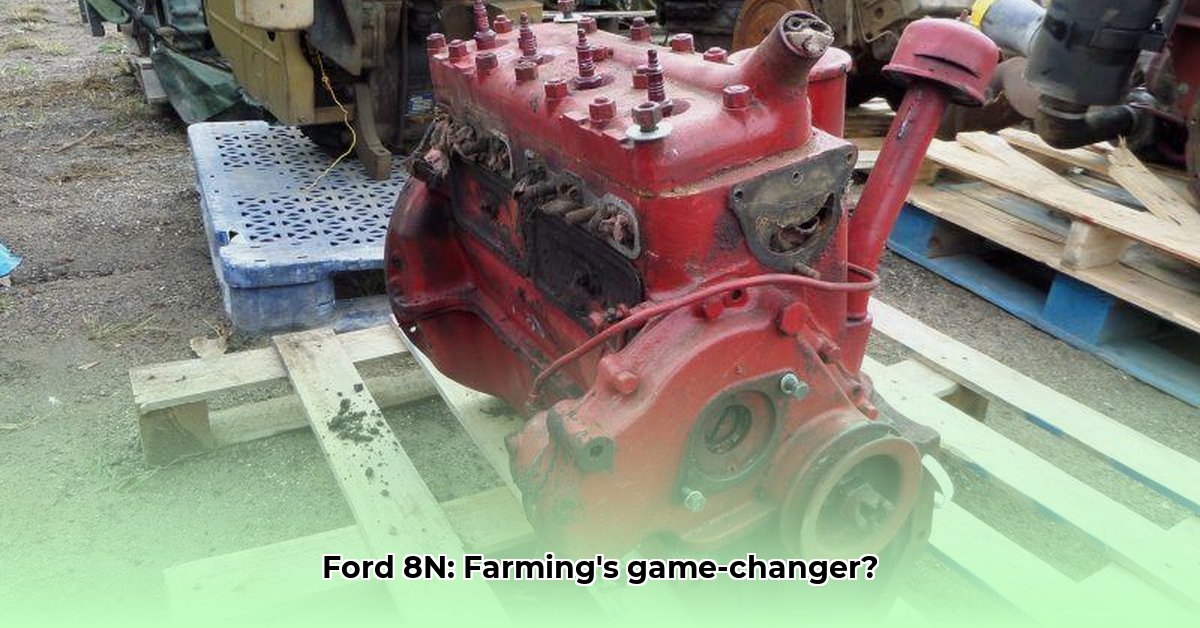
The Ford 8N tractor, introduced in 1947, significantly altered agricultural practices. Its mass production—over 524,000 units by 1952—marked a pivotal shift from animal-powered farming to mechanized agriculture. This article explores the 8N's engine, examining its technological advancements, limitations, and lasting impact on farming and the environment. For more detailed specifications, see the Ford 9N information.
A Technological Leap in Agricultural Mechanization
The Ford 8N's engine, while modest at approximately 21.95 horsepower at the drawbar (a measure of pulling power), represented a revolutionary increase in efficiency for its era. Before the 8N, farming relied heavily on human and animal labor. The 8N's mechanization drastically reduced labor demands for tasks like plowing, planting, and harvesting. This resulted in increased yields and substantially lower labor costs, transforming the agricultural landscape. Furthermore, the inclusion of a hydraulic system allowed for unprecedented precision in operating farm implements. Did this mechanization lead to unforeseen consequences? The impact on labor markets and farm sizes deserves further examination.
Simplicity, Reliability, and Ease of Maintenance
The 8N’s four-cylinder engine prioritized simplicity and reliability: key characteristics for farmers often working independently and remotely. This design philosophy, coupled with readily available parts and relative ease of repair, minimized costly downtime. This focus on practical design and accessibility helped shape the long-term success of the tractor. How did this emphasis on maintainability influence the adoption of the 8N by farmers of varied technical skills?
Limitations and Trade-offs: Power and Efficiency
Despite its transformative impact, the 8N had limitations. Its modest horsepower made it unsuitable for all farming tasks, particularly in larger fields or challenging soil conditions. Modern tractors significantly surpass its power output. Moreover, fuel efficiency was comparatively low, raising environmental concerns in today's context. These constraints shaped farming practices, leading farmers to adapt their techniques to maximize the 8N’s capabilities. What strategies did farmers employ to overcome the 8N's limitations?
Environmental Considerations: A Historical Perspective
The 8N's environmental impact is complex. While it increased agricultural efficiency and potentially reduced the human labor involved in expansive land cultivation, its gasoline consumption and emissions are problematic by modern standards. However, we must consider the historical context. The 8N's success paved the way for further technological advancements that addressed many of its initial environmental drawbacks. “The Ford 8N’s fuel efficiency was a significant constraint, but it's vital to remember that it represented a transitional phase in agricultural technology, laying the groundwork for subsequent improvements,” explains Dr. Amelia Hernandez, Agricultural Historian at the University of California, Berkeley. Quantifying the 8N’s cumulative environmental impact over its lifespan requires further research.
An Enduring Legacy and Continuing Influence
The Ford 8N's influence extends far beyond its production years (1947-1952). Its simple, robust design helped shape the future of agricultural machinery. Many 8N tractors remain operational today, a testament to their durability. Its impact is visible in modern agricultural equipment design, highlighting its continuing relevance. How did the 8N's design principles influence subsequent tractor designs, and what specific features were adopted and refined?
Ford 8N: Key Specifications
| Feature | Specification |
|---|---|
| Engine Type | Four-cylinder, naturally aspirated |
| Horsepower (Drawbar) | Approximately 21.95 hp |
| Production Years | 1947-1952 |
| Units Produced | Over 524,000 |
| Fuel Type | Gasoline |
The Ford 8N's impact continues to be studied, furthering our understanding of its role in agricultural history and technological advancement. Its enduring legacy as a symbol of progress in farming remains undeniable. Further investigation into its long-term environmental consequences is warranted.